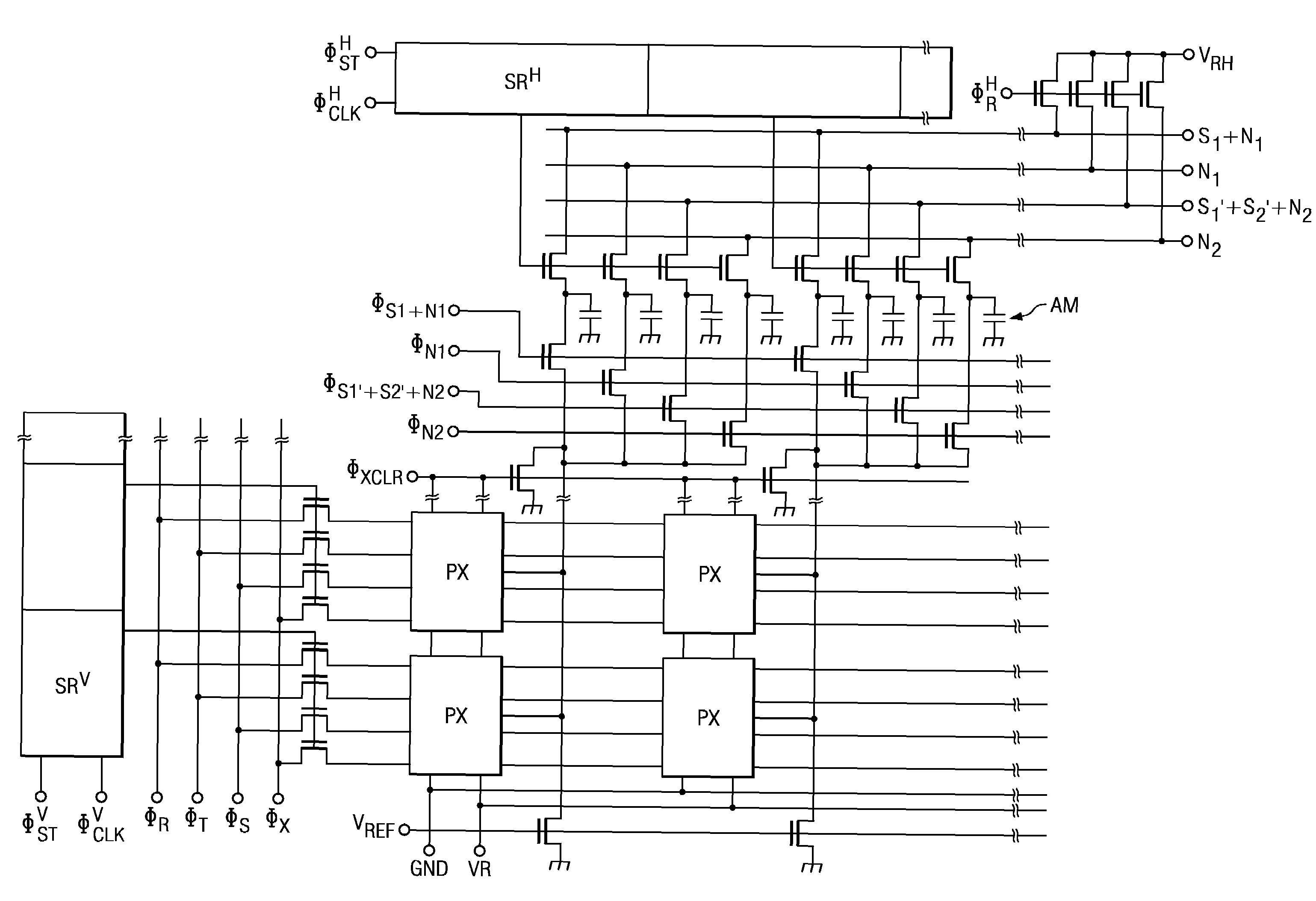Solid-state image pickup device and method
a solid-state image and pickup device technology, applied in the direction of radioation control devices, television system scanning details, television systems, etc., can solve the problem of difficult realization achieve the effect of wide dynamic range, high sensitivity, and high s/n ratio
- Summary
- Abstract
- Description
- Claims
- Application Information
AI Technical Summary
Benefits of technology
Problems solved by technology
Method used
Image
Examples
first embodiment
[0041]The solid-state image pickup device pertaining to the present embodiment is a CMOS image sensor. FIG. 1 is an equivalent circuit diagram illustrating one pixel PX (pixel).
[0042]For a so-called five-transistor type CMOS image sensor, each pixel includes the following elements: a photodiode PD which receives light and generates and stores photoelectric charge; a transfer transistor Tr1 which transfers such photoelectric charge from such photodiode PD; a floating diffusion FD which transfers such photoelectric charge through such transfer transistor Tr1; an additive capacitive element Cs; a capacitive coupling transistor Tr2 which combines or divides the capacitance of such floating diffusion FD and the capacitance of such additive capacitive element Cs; a reset transistor Tr3 which is connected to floating diffusion FD and exhausts the photoelectric charge in floating diffusion FD; an amplifying transistor Tr4 (source follower SF) that amplifies and converts the photoelectric ch...
second embodiment
[0071]FIG. 10 is an equivalent circuit diagram illustrating a portion of eight pixels of a CMOS image sensor as the solid-state image pickup device in a second embodiment. While the CMOS image sensor in the first embodiment is a so-called five-transistor type CMOS image sensor having five transistors for each pixel: a transfer transistor, capacitive coupling transistor, reset transistor, amplifying transistor (source follower), and selecting transistor Tr5, the present embodiment has a configuration in which the reset transistor and additive capacitive element are shared by four pixels adjacent to each other in the vertical direction (V direction).
[0072]As shown in FIG. 10, in the vertical direction (V direction), lines 1-4 are set side-by-side, and, in the horizontal direction, columns 1-2 are set side-by-side. Eight pixels are set in this configuration. Pixels have photodiodes PD11-PD14, PD21-PD24, and floating diffusions FD11-FD14, FD21-FD24, respectively. Also, transfer transist...
third embodiment
[0075]FIG. 12 is an equivalent circuit diagram illustrating a portion of eight pixels of a CMOS image sensor as the solid-state image pickup device of a third embodiment. Just as in the second embodiment, the reset transistor and the additive capacitive element are shared by four pixels that are adjacent in the vertical direction (V direction), and, in addition, the selecting transistor is shared by two pixels that are adjacent in the horizontal direction (H direction).
[0076]As shown in FIG. 12, in the vertical direction (V direction), lines 1-4 are set side-by-side, and, in the horizontal direction, columns 1-2 are set side-by-side. Eight pixels are set in this configuration. The pixels have photodiodes PD11-PD14, PD21-PD24, and floating diffusions FD11-FD14, FD21-FD24, respectively. Also, transfer transistor T, capacitive coupling transistor S, and an amplifying transistor (source follower) are set for each pixel. Here, the four pixels adjacent to each other in the vertical direct...
PUM
 Login to View More
Login to View More Abstract
Description
Claims
Application Information
 Login to View More
Login to View More - R&D
- Intellectual Property
- Life Sciences
- Materials
- Tech Scout
- Unparalleled Data Quality
- Higher Quality Content
- 60% Fewer Hallucinations
Browse by: Latest US Patents, China's latest patents, Technical Efficacy Thesaurus, Application Domain, Technology Topic, Popular Technical Reports.
© 2025 PatSnap. All rights reserved.Legal|Privacy policy|Modern Slavery Act Transparency Statement|Sitemap|About US| Contact US: help@patsnap.com



